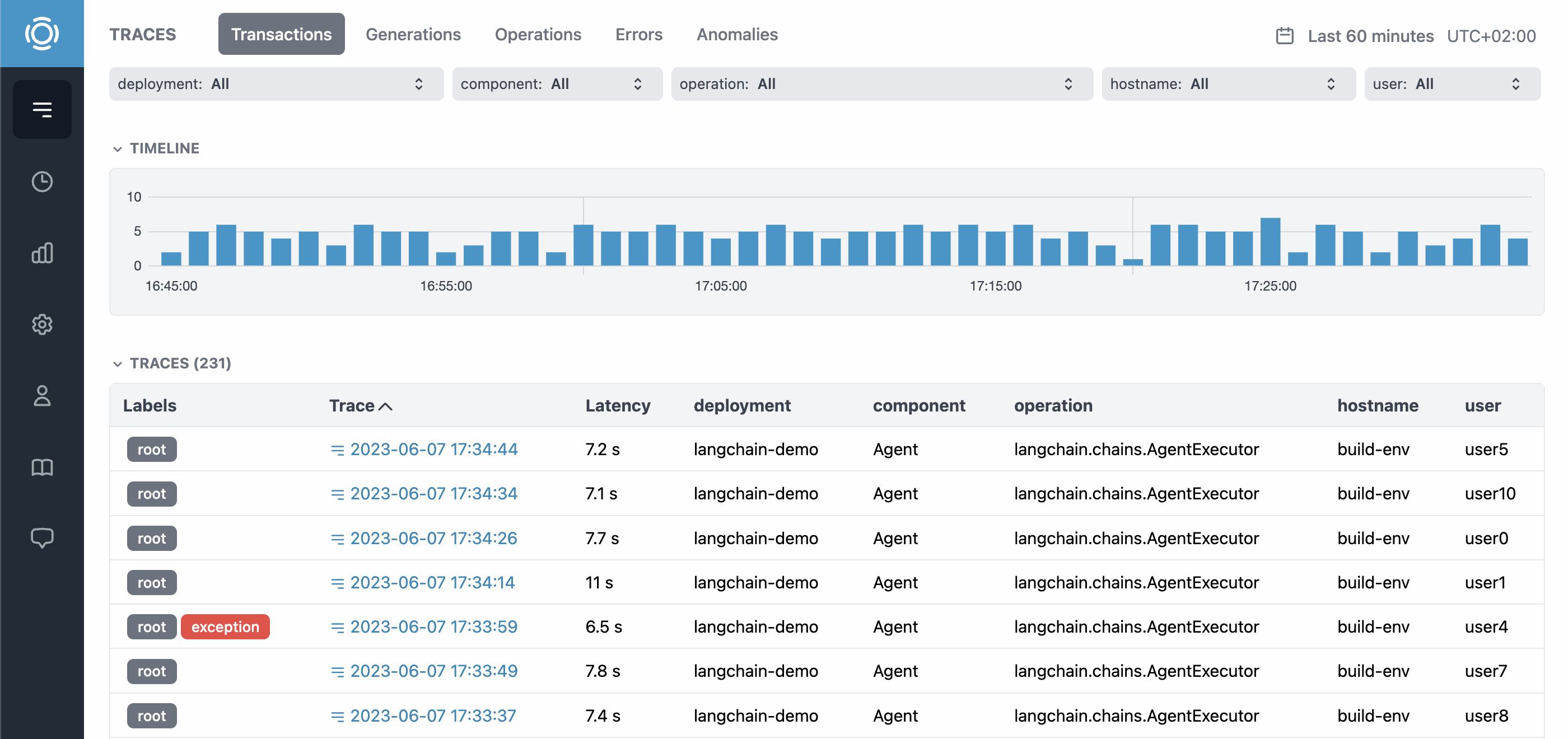Graphsignal Profiler
Project description
Graphsignal Profiler
Graphsignal is a machine learning profiler. It helps data scientists and ML engineers make model training and inference faster and more efficient. It is built for real-world use cases and allows ML practitioners to:
- Optimize training and inference by benchmarking and analyzing speed, compute and operation statistics.
- Start profiling scripts and notebooks automatically by adding a few lines of code.
- Use the profiler in local, remote or cloud environment without installing any additional software or opening inbound ports.
- Keep data private; no code or data is sent to Graphsignal cloud, only run statistics and metadata.
Learn more at graphsignal.com.
Documentation
See full documentation at graphsignal.com/docs.
Getting Started
1. Installation
Install the profiler by running:
pip install graphsignal
Or clone and install the GitHub repository:
git clone https://github.com/graphsignal/graphsignal.git
python setup.py install
Import the module in your application:
import graphsignal
For GPU profiling, make sure the NVIDIA® CUDA® Profiling Tools Interface (CUPTI) is installed by running:
/sbin/ldconfig -p | grep libcupti
2. Configuration
Configure the profiler by specifying your API key and workload name directly or via environment variables.
graphsignal.configure(api_key='my_api_key', workload_name='job1')
To get an API key, sign up for a free account at graphsignal.com. The key can then be found in your account's Settings / API Keys page.
workload_name identifies the job, application or service that is being profiled.
3. Profiling
Use the following minimal examples to integrate Graphsignal into your machine learning script. See integration documentation and profiling API reference for full reference.
To ensure optimal statistics and low overhead, the profiler automatically profiles only certain training steps and/or predictions.
TensorFlow
from graphsignal.profilers.tensorflow import profile_step
with profile_step():
# training batch, prediction, etc.
Keras
from graphsignal.profilers.keras import GraphsignalCallback
model.fit(..., callbacks=[GraphsignalCallback()])
# or model.predict(..., callbacks=[GraphsignalCallback()])
PyTorch
from graphsignal.profilers.pytorch import profile_step
with profile_step():
# training batch, prediction, etc.
PyTorch Lightning
from graphsignal.profilers.pytorch_lightning import GraphsignalCallback
trainer = Trainer(..., callbacks=[GraphsignalCallback()])
Hugging Face
from graphsignal.profilers.huggingface import GraphsignalPTCallback
# or GraphsignalTFCallback for TensorFlow
trainer = Trainer(..., callbacks=[GraphsignalPTCallback()])
# or trainer.add_callback(GraphsignalPTCallback())
Other frameworks
ML operation and kernel statistics are not supported by generic profiler.
from graphsignal.profilers.generic import profile_step
with profile_step():
# training batch, prediction, etc.
Distributed workloads
Graphsignal has a built-in support for distributed training and inference, e.g. multi-node and multi-gpu training. See Distributed Workloads section for more information.
4. Dashboards
After profiling is setup, open to Graphsignal to analyze recorded profiles.
Example
# 1. Import Graphsignal modules
import graphsignal
from graphsignal.profilers.keras import GraphsignalCallback
# 2. Configure
graphsignal.configure(api_key='my_key', workload_name='training_example')
....
# 3. Add profiler callback or use profiler API
model.fit(..., callbacks=[GraphsignalCallback()])
More integration examples are available in examples repo.
Overhead
Although profiling may add some overhead to applications, Graphsignal Profiler only profiles certain steps, e.g. training batches or predictions, automatically limiting the overhead.
Security and Privacy
Graphsignal Profiler can only open outbound connections to profile-api.graphsignal.com and send data, no inbound connections or commands are possible.
No code or data is sent to Graphsignal cloud, only run statistics and metadata.
Troubleshooting
To enable debug logging, add debug_mode=True to configure(). If the debug log doesn't give you any hints on how to fix a problem, please report it to our support team via your account.
In case of connection issues, please make sure outgoing connections to https://profile-api.graphsignal.com are allowed.
Project details
Release history Release notifications | RSS feed
Download files
Download the file for your platform. If you're not sure which to choose, learn more about installing packages.















